Overview: Winter Storm January 10-11, 2020
Snowfall
First Round of Winter Weather: Wintry Mix
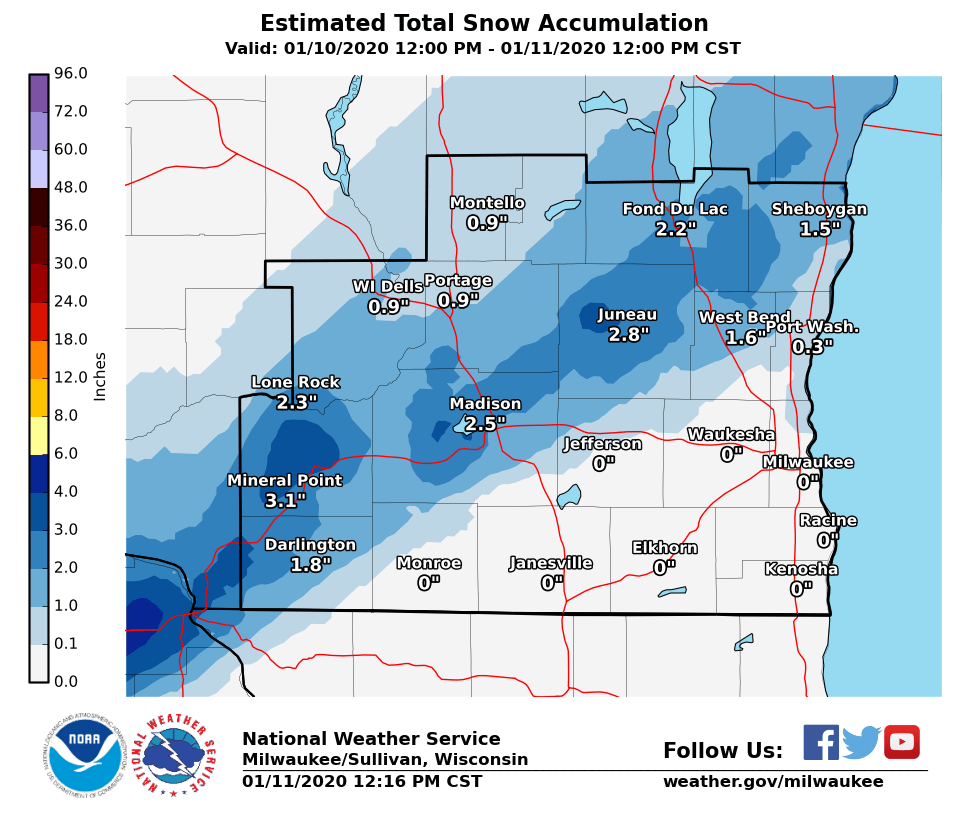 |
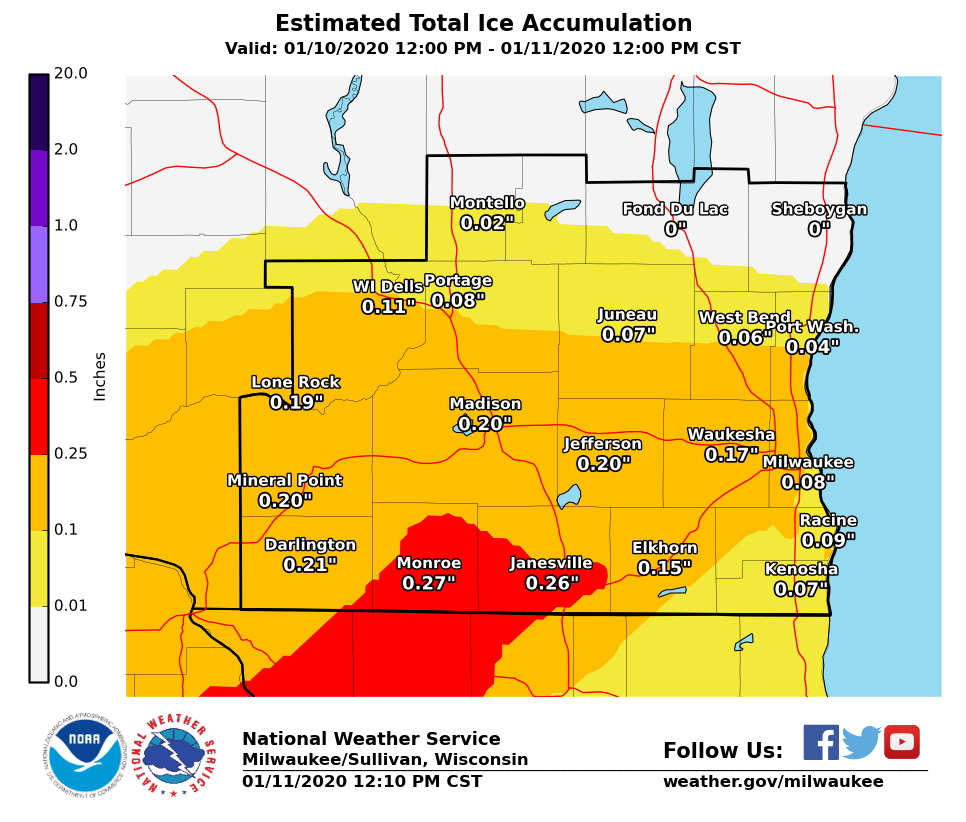 |
| Round 1 Snowfall Totals: 12 PM January 10, 2020 to 12 PM January 11, 2020 | Round 1 Ice Accumulations: 12 PM January 10, 2020 to 12 PM January 11, 2020 |
Second Round of Winter Weather: Snow
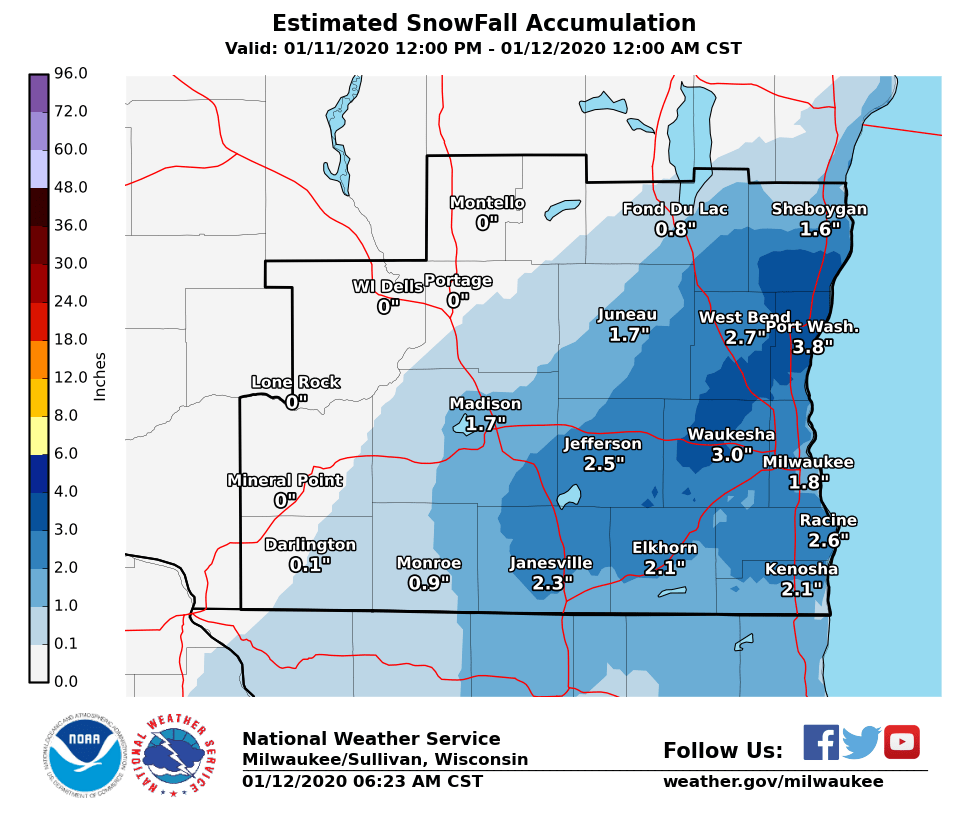 |
| Round 2 Snowfall Totals: 12 PM January 11, 2020 to 12 AM January 12, 2020 |
Total Snowfall
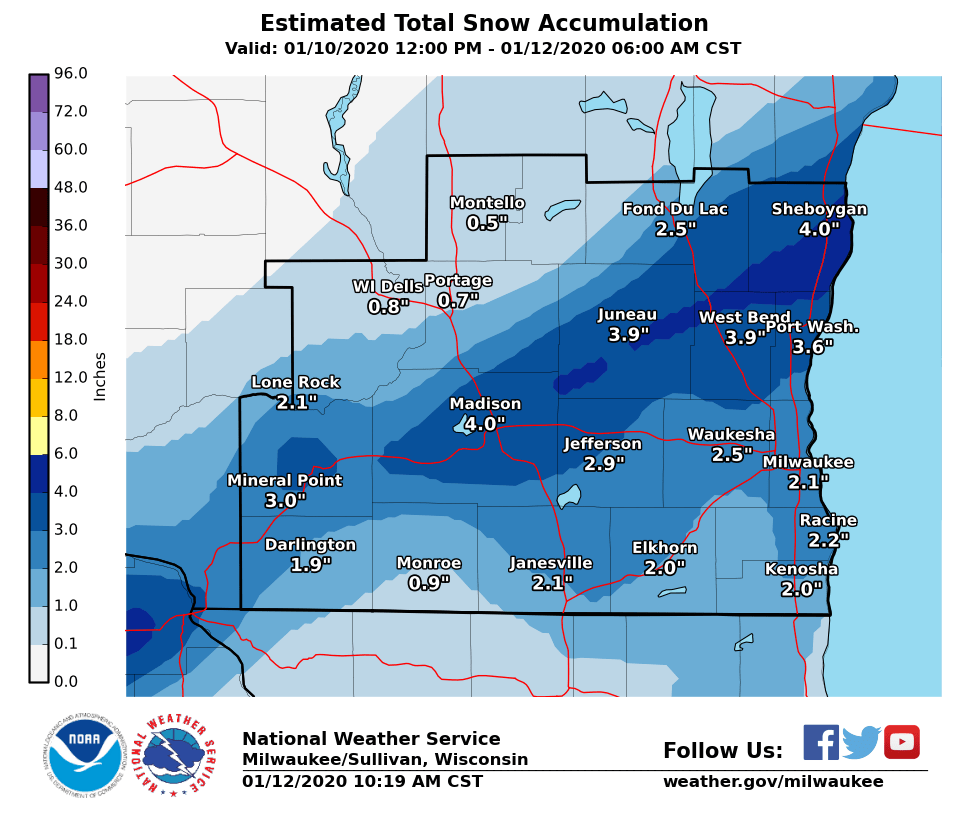 |
| Two Day Snowfall from January 10-12, 2020 |
Forecast Challenges
What happened to all the snow that was forecast early on??
The biggest factor was that the low tracked farther east and thus also strengthened/pivoted farther east, resulting in much lower snow amounts. Based on the forecast and model guidance right before the storm moved in, there was about a 90% of getting snow totals greater than what we ended up receiving. Winter storms can be very complex and sometimes throw us curve balls at the last minute. It doesn't take much of a jog in storm track to change snow totals given an often sharp transition between no precipitation, to snow, to rain.
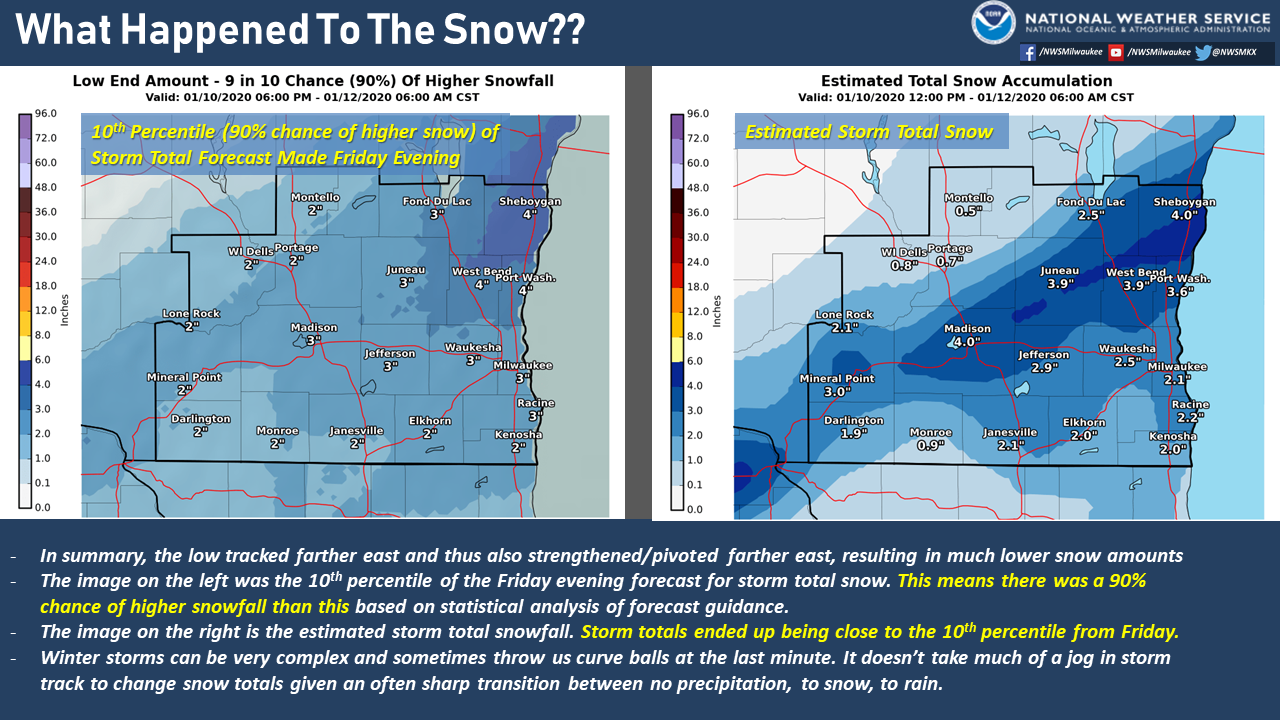 |
Radar
Loop of Winter Weather From 3 PM Friday to 12 AM Sunday (01/10/2020 - 01/12/2020)
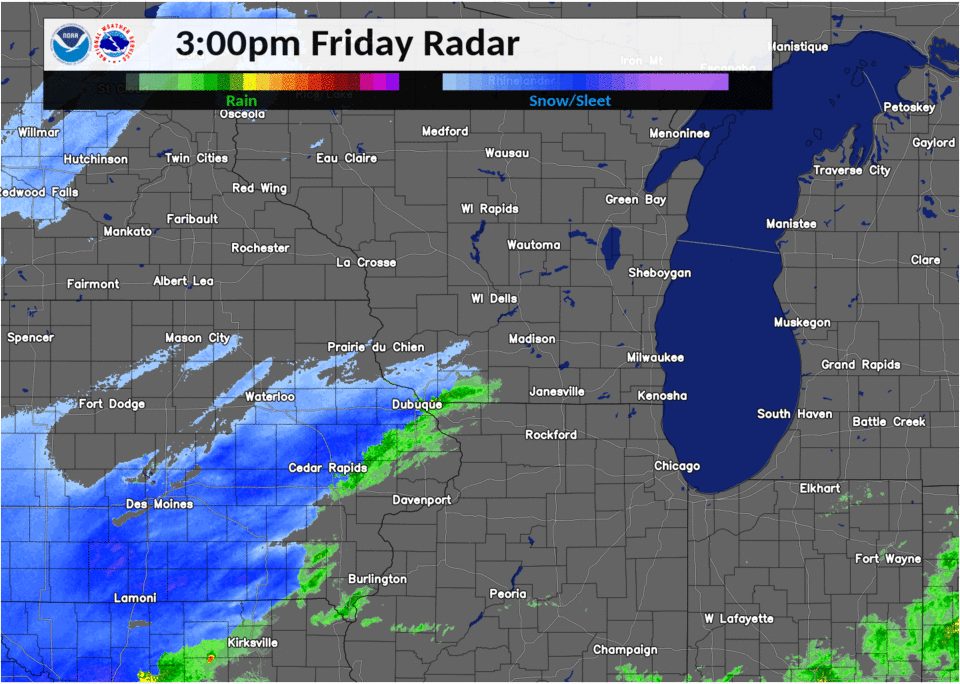 |
| 3 PM Friday to 12 AM Sunday (01/10/2020 - 01/12/2020) |
Lakeshore Flooding
A period of strong north to northeasterly onshore winds gusting 40 to 50 mph at times combined with near record high Lake Michigan water levels resulted in significant lakeshore flooding in parts of Milwaukee. The flooding resulted in the closure of the Port of Milwaukee. Approximately 60 to 70% of Jones Island which is the home of the Port of Milwaukee was flooded on Saturday (01/11/2020). The lakeshore flooding also caused damage to a pier at the South Shore Yacht Club, located south of the Port of Milwaukee. Peak wind gust at KMKE was 47 kts from NNE this morning.
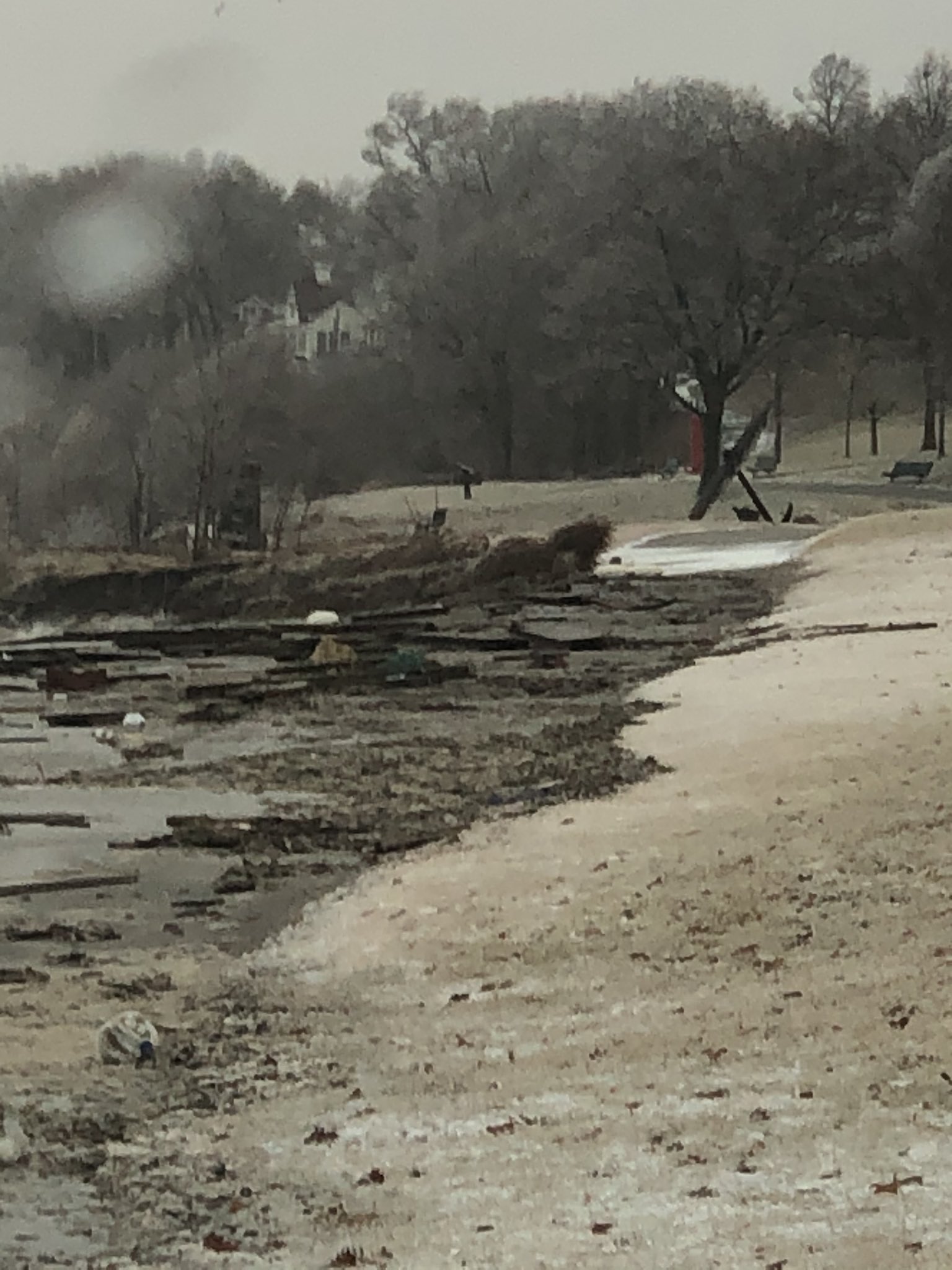 |
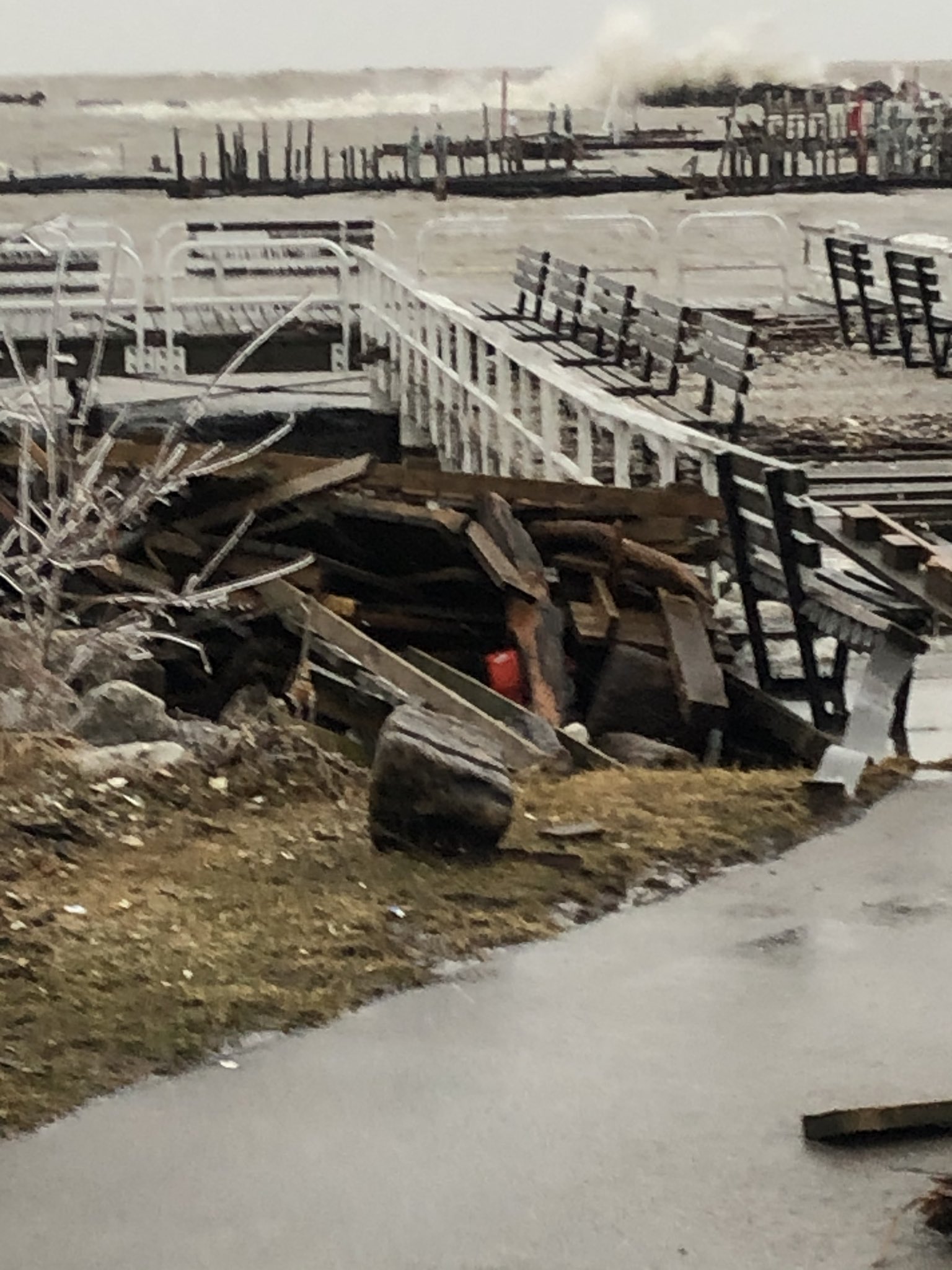 |
| Lakeshore Flood Damage | Lakeshore Flood Damage |
Storm Reports
...Highest Wind Gusts for Saturday 01/11/2020... LOCATION SPEED TIME/DATE RACINE-BATTEN AIRPORT 58 MPH 0620 AM 01/11 KENOSHA 55 MPH 0600 AM 01/11 MILWAUKEE-GEN MITCHELL ARPT 54 MPH 0728 AM 01/11 KENOSHA AIRPORT 51 MPH 0803 AM 01/11 SHEBOYGAN 47 MPH 0200 AM 01/11 PLEASANT PRAIRIE 44 MPH 0548 AM 01/11 MONROE 41 MPH 0815 AM 01/11 FOND DU LAC AIRPORT 41 MPH 0159 AM 01/11 MADISON-DANE COUNTY AIRPORT 40 MPH 0417 AM 01/11 1 ENE MILWAUKEE 38 MPH 0240 AM 01/11 SHEBOYGAN-AIRPORT 38 MPH 0811 AM 01/11 HORICON 37 MPH 0328 AM 01/11 JUNEAU 36 MPH 0855 AM 01/11 WAUKESHA AIRPORT 36 MPH 0535 AM 01/11 BURLINGTON 35 MPH 0455 AM 01/11 BROOKFIELD 35 MPH 0358 AM 01/11 MILWAUKEE LAWREN 35 MPH 0335 AM 01/11 WEST ALLIS 35 MPH 0323 AM 01/11
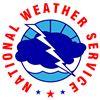 |
Media use of NWS Web News Stories is encouraged! Please acknowledge the NWS as the source of any news information accessed from this site. |
 |